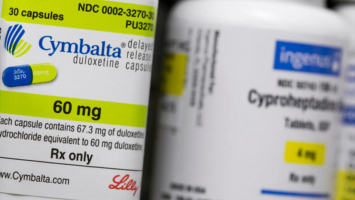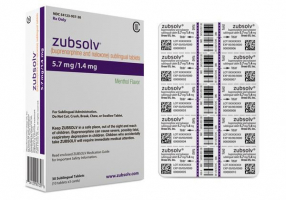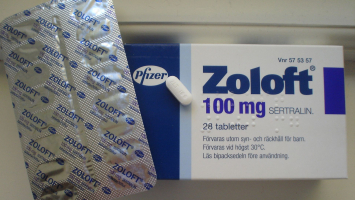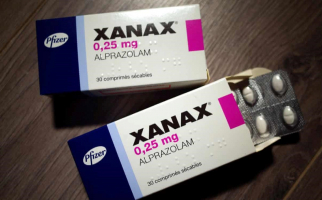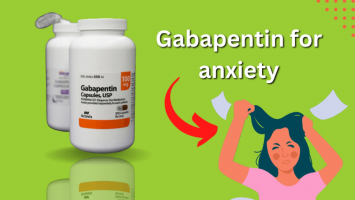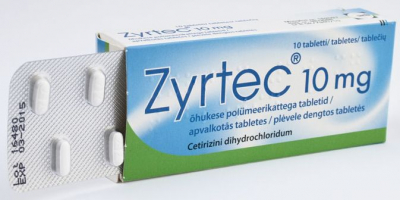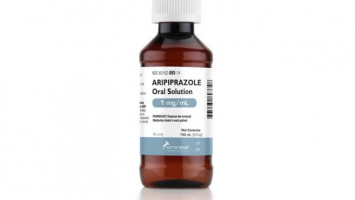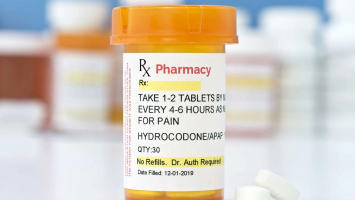Top 8 Things to Know About Fentanyl
Fentanyl is approximately 100 times stronger than morphine and 50 times stronger than heroin. It is, in fact, the most potent opioid pain reliever available ... read more...for medical use. The Centers for Disease Control and Prevention provided this data (CDC). Although healthcare professionals believe that fentanyl is safe and effective when used in a monitored medical setting, the drug still has a high potential for misuse, also known as abuse. Designer fentanyl analogs, which are nearly identical to the original drug, are created by some people. Because fentanyl and its analogs are so potent, accidental overdoses and deaths are becoming more common.Analogs are frequently mixed with or substituted for heroin. Because fentanyl is far more potent than heroin, the risk of overdose and death is greatly increased. In this article, we will look at the medical applications of fentanyl as well as its side effects. We will also discuss fentanyl misuse, addiction, and the risk of overdose.
-
Fentanyl is a Schedule II prescription narcotic analgesic with 50-100 times the potency of morphine and 30-50 times the potency of heroin.
Fentanyl is available by prescription under the brand names Actiq, Duragesic, and Sublimaze. People who have a prescription for the medication usually take it as a shot or as a patch on their arm. It can also be taken as a throat lozenge.
People with substance abuse disorders can also illegally use synthetic fentanyl. They can get it as powders or pills, or they can put it in containers like eyedroppers or nasal sprays. Apache, China Girl, Goodfellas, Great Bear, Poison, and Tango & Cash are some of the street names for the drug.
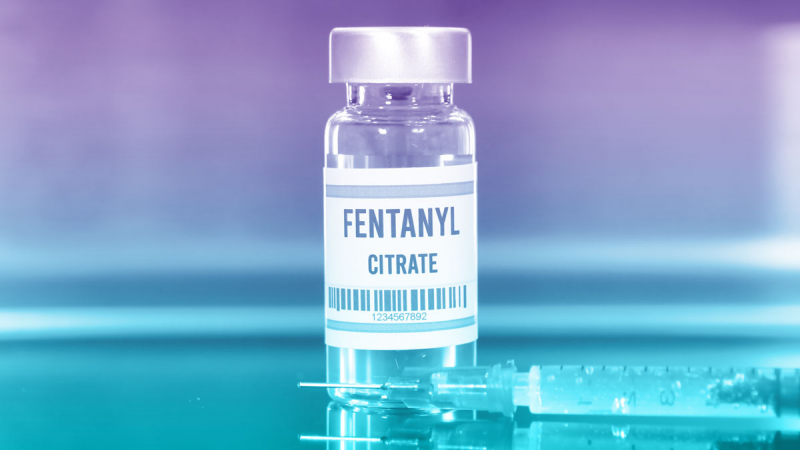
Clean Recovery Centers 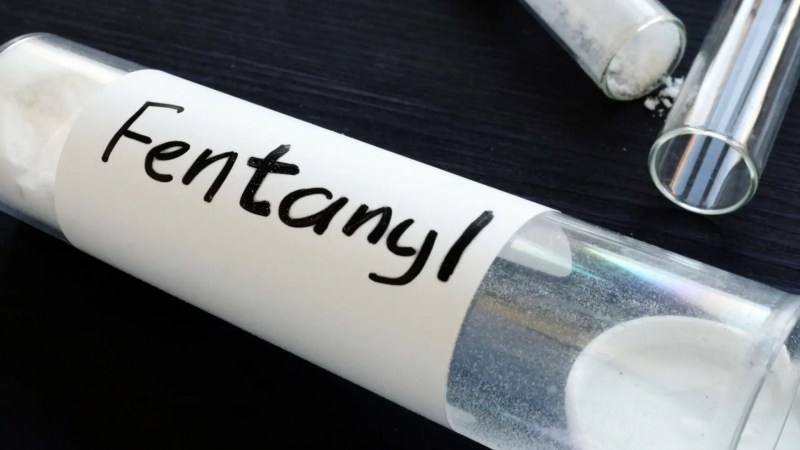
Heroes' Mile Addiction Recovery -
Fentanyl binds to the same brain receptors that control pain and emotion as do other opioid drugs. This results in feelings of happiness (euphoria), relaxation, and pain relief.
Everyone is affected by fentanyl differently. The following factors determine an individual's effects:
- size
- weight
- overall state of health
The effects are also dependent on:
- the amount a person takes
- whether they take it in combination with other drugs
- whether the person is used to taking opioids
However, over time, fentanyl causes the brain to adapt, making it challenging for an individual to feel happy or content for reasons other than taking the drug. Addiction may result from this.
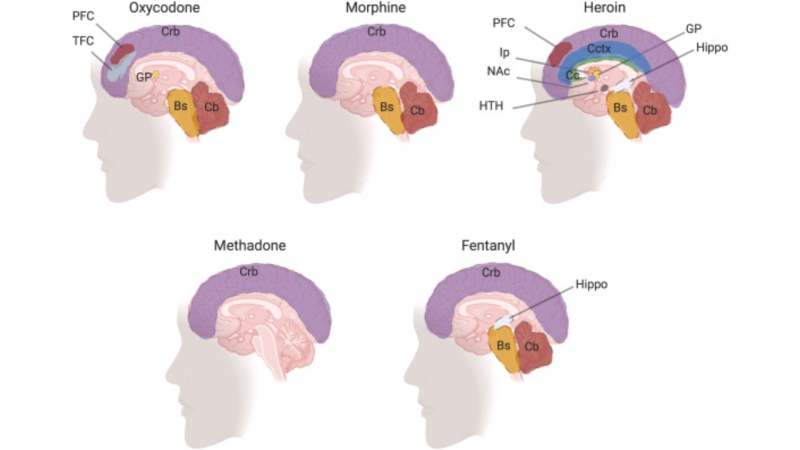
ScienceDirect.com AsapSCIENCE's Channel -
Fentanyl that is medically prescribed comes in a number of formulations, including:
- lozenges
- lollipops
- oral or nasal sprays
- injections
Fentanyl has several medical applications:
- anesthesia for patients undergoing heart surgery or for patients with poor heart function
- management of breakthrough cancer pain in patients who are already receiving opioid medication for underlying, persistent pain
- pain management in people who have persistent, moderate-to-severe chronic pain requiring continuous, around-the-clock opioids
- pain relief for people who are already taking narcotic analgesics or who are already opioid-tolerant
Fentanyl patch
Fentanyl is given through a transdermal patch that adheres to the skin for continuous delivery. Over the course of 20 to 72 hours, the patch gradually releases fentanyl into the bloodstream through the skin.
Only patients who have already developed a tolerance to opioid therapy of a similar potency are eligible for the fentanyl patch. Fentanyl can continue to work for 13 to 24 hours after the patch is taken off because it has already been absorbed through the skin. However, how well the drug is absorbed through each person's skin varies.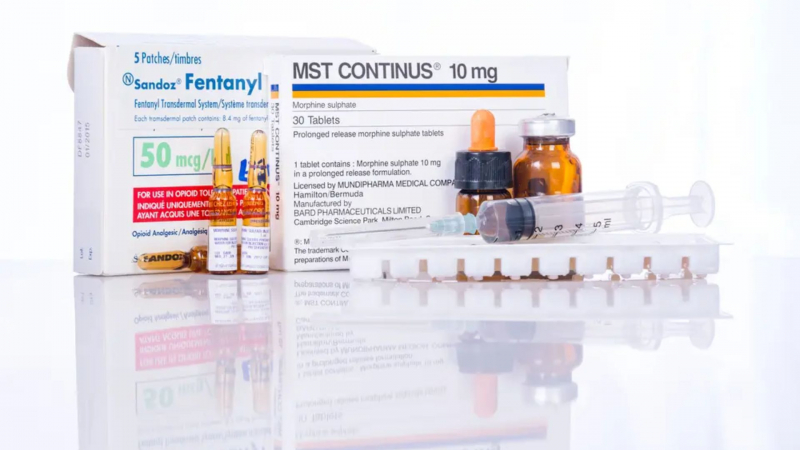
Managed Healthcare Executive 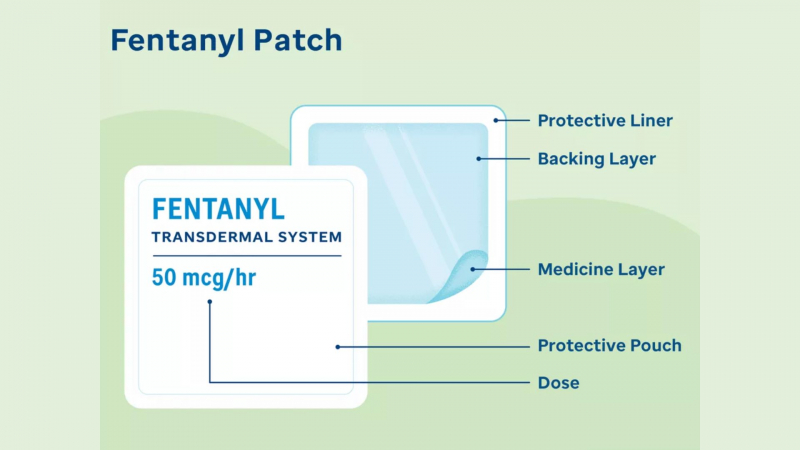
St. Jude Together -
Adverse effects, especially the respiratory depressant effects of fentanyl, are more common in older people than in younger people. Healthcare professionals must monitor people in this age group frequently and with extreme caution.
Side effects of fentanyl include:
- drowsiness
- confusion
- constipation
- weakness
- dry mouth
- constricted pupils
- unconsciousness
- slowed respirations
- decreased heart rate
- nausea
- sweating
- flushing
- stiff or rigid muscles
- tight feeling in the throat
- difficulty concentrating
Adverse effects associated with transdermal fentanyl patches include:
- discoloration
- rash
- itching
- swelling at the site of application
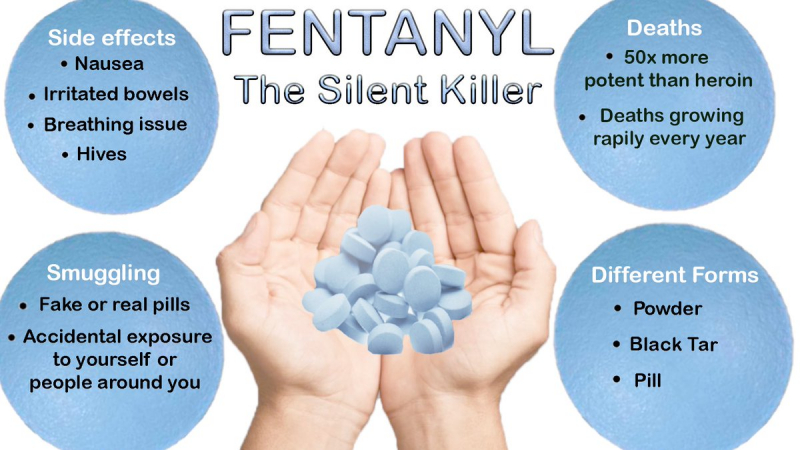
Twitter 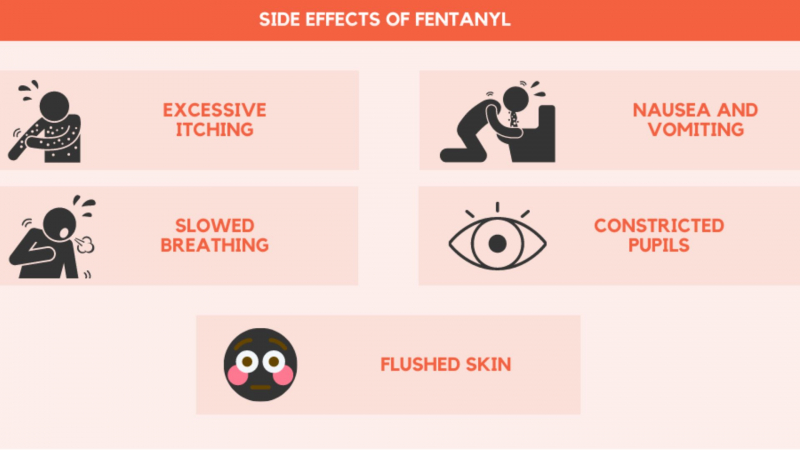
PAX Memphis -
Fentanyl can be obtained by people with substance use disorders by stealing it from legal medical supplies or by producing it in illegal labs. They can inject it, smoke it, snort it, or take it orally. There is no safer method of use than another.
Fentanyl patches can even be thrown away and still contain large amounts of the drug. People with opioid use disorders can take the gel out of expired patches and eat, smoke, inject, or place it under their tongue.
The potency of many fentanyl analogs may be much higher than that of heroin, making the former even more dangerous.
Other illegal drugs, such as heroin and cocaine, are frequently mixed with fentanyl, making them far more potent. People with substance use disorders may be unaware of the addition of fentanyl, putting them at risk of accidental overdose or death.
Treatment options for fentanyl addiction
The treatment for fentanyl addiction is the same as it is for any other opioid use disorder, and it is determined by the severity of the addiction. Inpatient or outpatient detox, medication treatments for cravings and relapse, and residential and outpatient behavioral treatment programs are all options for treatment.
Buprenorphine and methadone are two medications that affect the same receptors in the brain as fentanyl. This helps to alleviate withdrawal symptoms. A doctor may also prescribe naltrexone, a different medication that prevents fentanyl from affecting the body.
Many factors can influence which medication is best for a person. A person should consult their doctor about the best course of treatment. They may also wish to consult with a therapist.This may also assist them in developing a healthier lifestyle and maintaining consistent medication use, if medication is part of their treatment. Among the possible therapies are:
- cognitive behavioral therapy, which works on changing behavior and managing triggers and anxiety.
- contingency management, which gives point vouchers for negative drug tests
- motivational interviewing, which counsels the individual based on their unique needs and their conflicting feelings regarding their need to change in order to overcome addiction
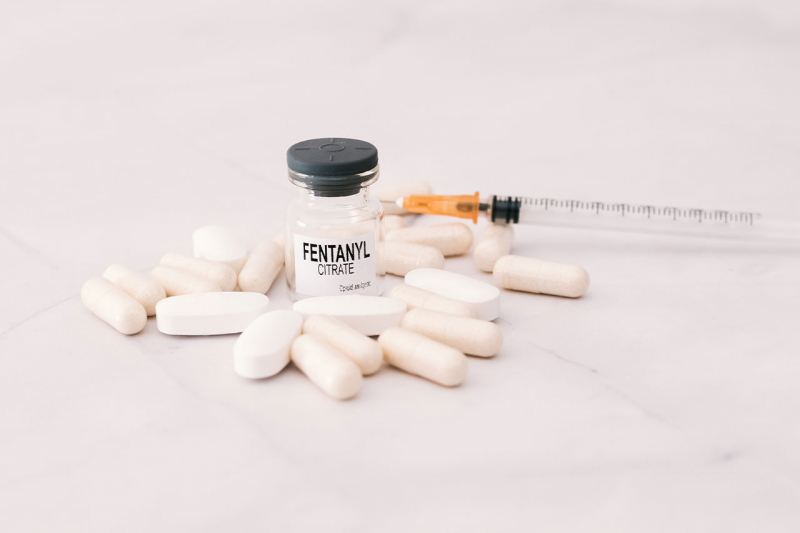
Clearbrook Treatment Centers 
Gateway Foundation -
There is a risk of dependency, tolerance, misuse, and addiction, as with any opiate. When people abruptly stop taking the drug, they experience withdrawal symptoms.
Withdrawal symptoms typically begin within 12 hours of the last fentanyl dose and can last a week or more. A person in withdrawal may experience the following symptoms:
- dilated pupils
- vomiting and diarrhea
- goosebumps
- a runny nose
- hot and cold flashes
- chills
- anxiety
- agitation
- insomnia
- severe generalized pain
People who use fentanyl frequently develop tolerance to high doses, requiring more of the drug to achieve the desired effect.
Repeated opioid use frequently leads to addiction, which is a chronic relapsing condition characterized by uncontrollable drug-seeking behavior despite harmful and negative consequences.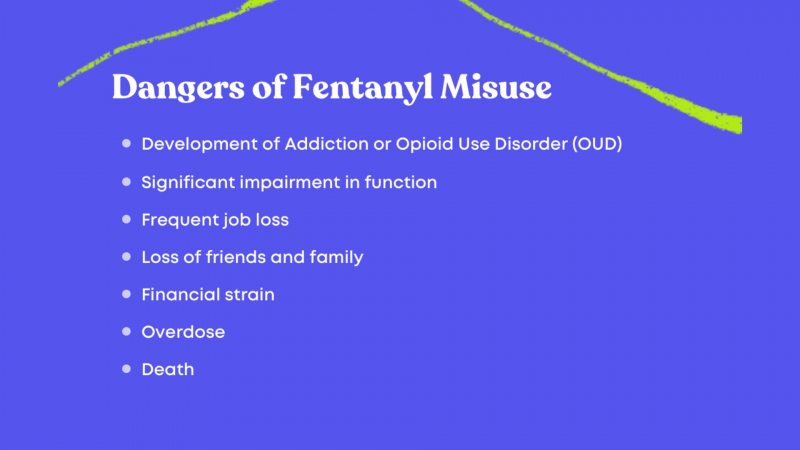
Bicycle Health 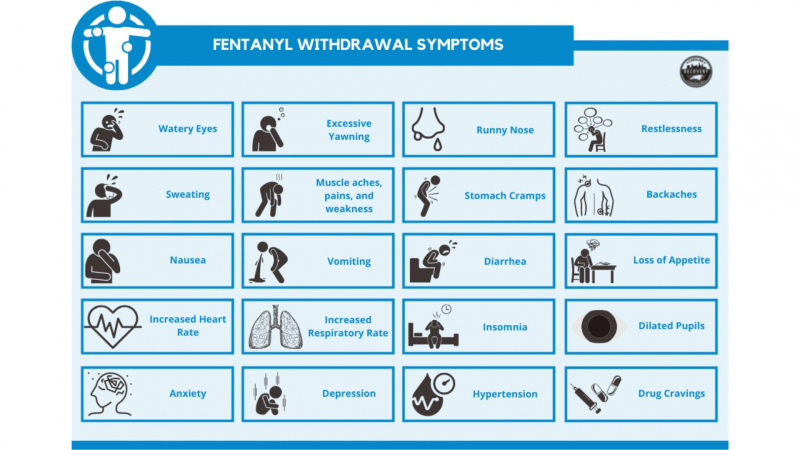
Carolina Center for Recovery -
Individuals who are addicted to opioids may use fentanyl as a substitute for heroin. However, it is a very dangerous substitute due to its high potency and people's inability to gauge dosages, resulting in frequent fatal overdoses.
Pure fentanyl powder is also notoriously difficult to dilute properly, frequently resulting in a dangerously potent mixture. Even people with a high opioid tolerance can die from it. Death occurs so quickly in some cases that people are discovered with a needle still in the injection site.
Fentanyl use can result in accidental death even with a single dose, especially if taken incorrectly.
The following are signs and symptoms of a fentanyl overdose:
- slow or shallow breathing
- slow heartbeat
- severe sleepiness
- cold, clammy skin
- trouble walking or talking
- feeling faint, dizzy, or confused
- unresponsiveness
Many fatal overdoses thought to be caused by heroin were actually caused by fentanyl. Even a small dose of fentanyl, such as 2 milligrams, can be fatal, depending on tolerance and body size. Unless given a specific reason, coroners' offices and state crime laboratories do not test for fentanyl or its analogs.
The Food and Drug Administration has issued a warning that people using both the brand-name product Duragesic and generic transdermal fentanyl patches have died or overdosed. It recently issued a warning that children are especially vulnerable to accidental death from exposure.Treatment
A fentanyl overdose is a medical emergency. Anyone experiencing overdose symptoms should seek medical attention right away. If they do not, they may suffer from hypoxia. This indicates that a person's brain is not receiving enough oxygen. The condition can result in coma or even death.
Overdose is usually treated with naloxone. However, it must be administered as soon as possible. The medication will prevent the fentanyl from acting. However, because fentanyl is so potent, a person may require multiple doses of the drug.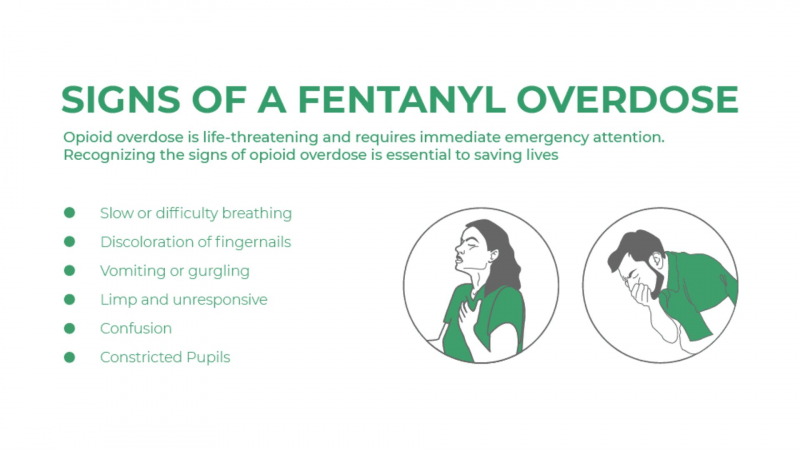
Springboard Recovery 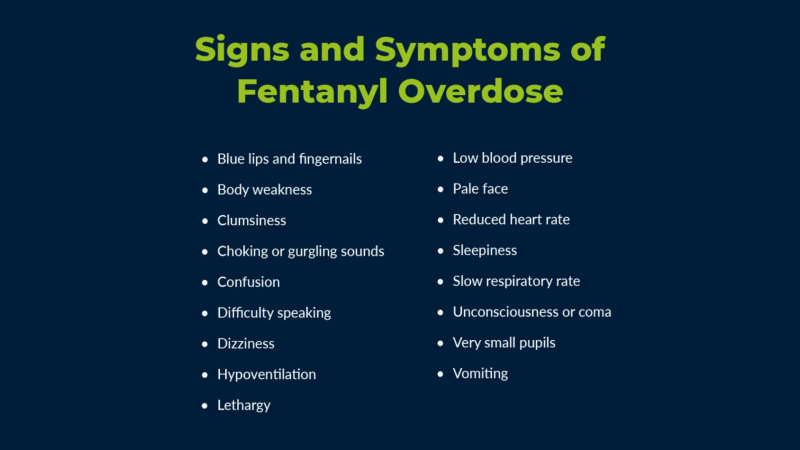
Better Addiction Care -
What it is: Fentanyl is an opioid analgesic that is 100 times more potentTrusted Source than morphine.
How it is used: It is taken legally in the prescription form to treat severe pain or illegally in synthetic form. People can also find it mixed with other illegal drugs. However, they may not always know that it is present.
How it feels: Fentanyl reduces pain and causes euphoria and relaxation.
What it causes: It carries a high risk of dependence and addiction, as well as a risk of overdose due to extreme potency.
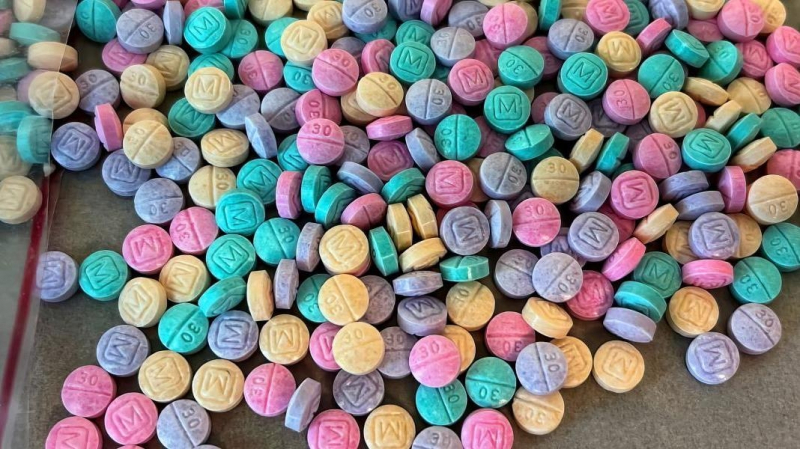
Rainbow fentanyl- NPR 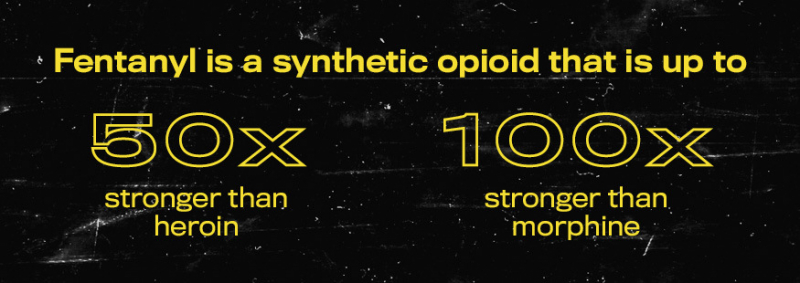
Centers for Disease Control and Prevention













